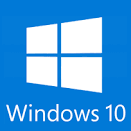How to change several system settings with PowerShell
PowerShell is an awesome addition to Windows and the admins that administer servers. This post covers a few PowerShell commands to make changes to common settings.
Create a drive to HKEY_CLASSES_ROOT & HKEY_CURRENT_USER. By default these two registry geys are not available for mounting and using in PowerShell, but that is an easy fix!
if (!(get-psdrive hkcr -ea 0)){New-PSDrive -Name HKCR -PSProvider Registry -Root HKEY_CLASSES_ROOT | out-null}
if (!(get-psdrive hku -ea 0)){New-PSDrive -Name HKU -PSProvider Registry -Root HKEY_USERS | out-null}
How about disabling UAC (User Access Control?
$regkeypath = "HKLM:\SOFTWARE\Microsoft\Windows\CurrentVersion\Policies\System" Set-ItemProperty -Path $regkeyPath -Name "EnableLUA" -Value 0
Let’s set a few Startup and Recovery Options.
$regkeypath="HKLM:\SYSTEM\CurrentControlSet\Control\CrashControl" #Write Debugging Info Set-ItemProperty -Path $regkeypath -Name "CrashDumpEnabled" -Value 3 #System Failure Auto Reboot Set-ItemProperty -Path $regkeypath -Name "AutoReboot" -Value 3 #System Failure Write to Event Logs Set-ItemProperty -Path $regkeypath -Name "LogEvent" -Value 3
Want to disable some services? Here is a way to disable four.
$regkeypath = "HKLM:\System\CurrentControlSet\Services" Set-ItemProperty -Path $regkeypath\RasMan -Name "Start" -Value 3 Set-ItemProperty -Path $regkeypath\Tapisrv -Name "Start" -Value 4 Set-ItemProperty -Path $regkeypath\RasAuto-Name "Start" -Value 4 Set-ItemProperty -Path $regkeypath\RemoteAccess -Name "Start" -Value 4
Screen Saver Password Protection
$regkeypath1 = "HKU:\.DEFAULT\Control Panel\Desktop" $regkeypath2 = "HKCU:\Control Panel\Desktop" Set-ItemProperty -Path $regkeypath1 -Name "ScreenSaveActive" -Value 1 Set-ItemProperty -Path $regkeypath2 -Name "ScreenSaveActive" -Value 1 Set-ItemProperty -Path $regkeypath1 -Name "ScreenSaverIsSecure" -Value 1 Set-ItemProperty -Path $regkeypath2 -Name "ScreenSaverIsSecure" -Value 1 Set-ItemProperty -Path $regkeypath1 -Name "SCRNSAVE.EXE" -Value logon.scr Set-ItemProperty -Path $regkeypath2 -Name "SCRNSAVE.EXE" -Value logon.scr
Set Standard Desktop -Logon Screen Saver Timeout Time – in seconds
Set-ItemProperty -Path $regkeypath1 -Name "ScreenSaveTimeout" -Value 900 Set-ItemProperty -Path $regkeypath2 -Name "ScreenSaveTimeout" -Value 900
Force Classic Start Menu
$regkeypath = "HKLM:\SOFTWARE\Microsoft\Windows\CurrentVersion\policies\Explorer"
#Create the key if doesn't exist
if (!(Test-Path $regkeypath)) {New-Item $regkeypath | Out-Null}
if ((Get-ItemProperty -Path $regkeypath).NoSimpleStartMenu -eq $null) { New-ItemProperty $regkeypath -Name "NoSimpleStartMenu" -type DWORD | Out-Null}
Set-ItemProperty -Path $regkeyPath -Name "NoSimpleStartMenu" -Value 1
Standard Desktop -Window Animations
$regkeypath = "HKU:\.DEFAULT\Control Panel\Desktop\WindowMetrics"
$regkeyexists = Test-Path $regkeypath
if ($regkeyexists -eq $false){ New-Item -Path $regkeypath | Out-Null }
if ((Get-ItemProperty -Path $regkeypath).minAnimate -eq $null) { New-ItemProperty $regkeypath -Name "minAnimate" -type DWORD | Out-Null}
Set-ItemProperty -Path $regkeyPath -Name "minAnimate" -Value 0
Standard Desktop – Automatically End Hung Applications on ShutDown
$regkeypath = "HKU:\.DEFAULT\Control Panel\Desktop"
if ((Get-ItemProperty -Path $regkeypath).AutoEndTasks -eq $null){ New-ItemProperty $regkeypath -Name "AutoEndTasks" -type String | Out-Null}
Set-ItemProperty -Path $regkeyPath -Name "AutoEndTasks" -Value 1
Configure Boot menu time out setting
$sh = New-Object -comobject "wscript.shell"
$BootTimeOut = $sh.run("bcdedit /timeout $Global:BootTimeOut",1,"true")
Configure Power Options, set yo High Performance
$HighPerfPwrGUID = "8c5e7fda-e8bf-4a96-9a85-a6e23a8c635c" $PowerCfgCmd = "powercfg -s $HighPerfPwrGUID" $PowerCfg = $sh.run($PowerCfgCmd, 1, "true")
if ((Test-Path(Join-Path $env:SystemDrive hiberfil.sys)))
{
$turnoffHibernationCmd = "powercfg /h off"
$HibernationCfg = $sh.run($turnoffHibernationCmd, 1, "true")
}
Hope you find these changes usefull in your daily endeavors!













this is a good link